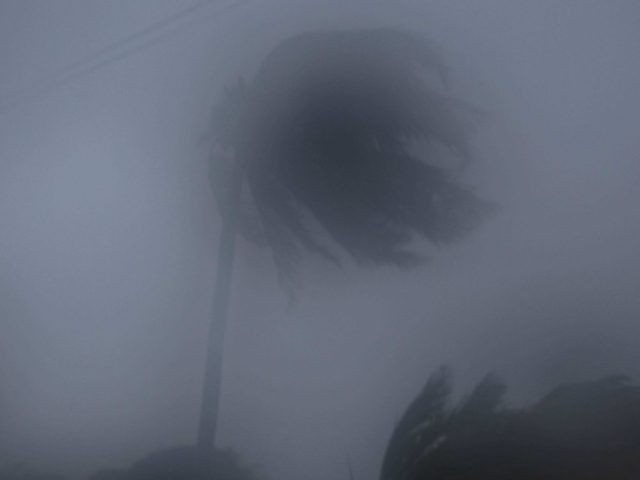When Hurricane Matthew strikes Florida, it is expected to boost the volume of Zika-infected mosquitos in the U.S., wipe out the effectiveness of anti-Zika pesticide spraying, and potentially spread the so-called Zika “danger zone” up the East Coast.
The monster Category-4 Atlantic hurricane, packing winds of 140 miles per hour, is on a path to strike Southern Florida on Friday morning, then drive up the center of the state. The storm appears to have more than enough power to veer right to hammer Georgia and the Carolinas, then move north, bringing torrential rain and flooding to the East Coast.
Jason Rasgon, associate professor of entomology and disease epidemiology at Penn State University, warned AccuWeather that Zika mosquitoes are so light and unaffected by raindrops, they will be picked up and blown to a new area as the Matthew advances.
There is no vaccine or treatment for the Zika virus, making prevention essential. Early on in the American Zika outbreak, public health officials falsely believed that Zika virus transmissions would remain limited to individuals that became infected through travel outside the continental U.S. to places where Zika is common, like Brazil and Puerto Rico.
But with two new locally-infected Zika cases being reported in Miami Beach and another four more in Miami-Dade County, the potential Zika pandemic now has confirmed 139 cases caused by domestic transmission. The CDC reports that there are confirmed 718 travel-related Zika infections recorded in Florida, with 103 involving pregnant women.
Zika is symptomatic for only 18 percent of cases. If symptoms appear, they are usually associated with a mild flu fever, joint pain, muscle pain, headache and red eyes. Consequently, the Zika infection rate is drastically underreported.
“Vector borne diseases” such as dengue fever, malaria, yellow fever, and Zika infect over one billion people and kill over one million people per year. Zika is easily spread by 1) mosquito blood bite; 2) mother-to-child; 3) sex; 4) saliva; 5) urine; 6) blood transfusion; and 7) research laboratory exposure, according to the CDC.
For the first time in its 70 year history, the CDC warned Americans on August 1 not to travel to an American neighborhood for fear of catching an infectious disease. The CDC advised pregnant women and their partners not to travel to a Zika-infested community near Miami that had 14 cases in a neighborhood with 200 homes and businesses.
According to the World Health Organization’s “Zika Virus Microcephaly” Situation Report, dated September 29, there are now confirmed Zika cases in over 70 countries. Indigenous domestic strains are now native to South America, North America and Asia.
The United States Center for Disease Control and Florida Homeland Security officials have gone all-out since August 4 with aerial and ground spraying in the Miami-Dade County “Danger Zone” to kill the common Aedes aegypti mosquitos that carry Zika virus.
CDC Director Tom Frieden told reporters that Miami-Dade’s aerial spraying of the insecticide Naled — in a fine mist fired from planes about 100 feet off the ground — was found to kill more than 90 percent of mosquitos in the 10-mile square area in Miami’s Wynwood area, where the first U.S. locally-transmitted Zika cases were found.
Hurricane Matthew will force an aerial pesticide spraying halt in South Florida on October 4, because it is ineffective in heavy winds. The storm’s up to 25 inches of rain are expected to cause widespread flooding that will drastically increase mosquito breeding.
Florida Gov. Rick Scott has desperately warned residents and business owners to drain standing water from their properties before and after the hurricane to limit mosquito population growth.

COMMENTS
Please let us know if you're having issues with commenting.